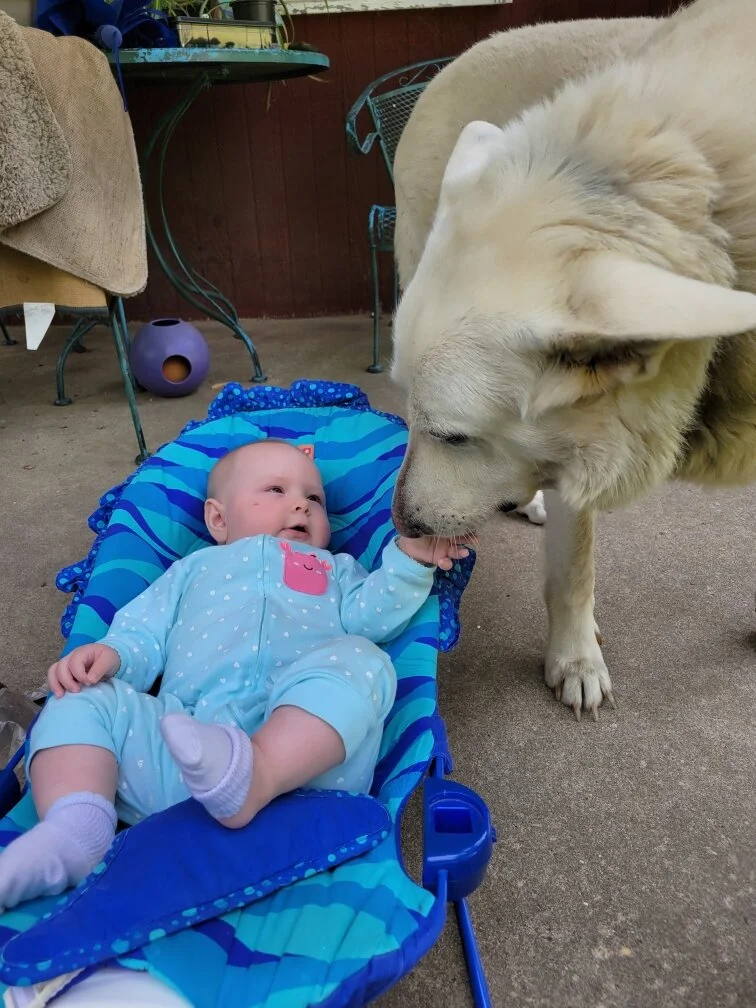Therapy Animals Improving the Quality of Life
Our family has two pets, a white German Shepherd, Tatanka, we call the ‘great white beast’ because he’s over 110 pounds, but is protector of the property and his charges, our grandchildren who live next door. We also have a very timid and flighty inside cat.
We bought Tatanka from a private seller who had taught him a lot of bad manners and habits which needed changing once we adopted him a just over a year old. Little Bear, our cat, we adopted from the SPCA who’d spent nearly the first six months of his life in a cage and had no idea how to respond as a normal cat. While he is much more social now, he still hides when company comes in, and jumps at the drop of a hat!
Neither of our animals are considered ‘therapy animals’ but in our family, both the cat and the dog are loyal to my husband, who has been sick for some time. The cat will curl up next to my husband almost as soon as he sits in the recliner. The dog follows him everywhere when they are outside! Given my husband’s health, the cat offers calm since my husband will stroke his back without even thinking and the dog lets us know where we can find his master!
Animals are amazing creatures, and not just cats and dogs, although they are the ones most people consider the best for therapy. Other animals, such as, alpacas, Vietnamese Pot Bellied pigs, birds, cows, horses and other animals can serve the same purpose.
When trained correctly, these amazing animals can offer love, support, and other kinds of therapies for their masters. One dog I read about was rescued after being badly burned. The vet, to whom the dog was given, discovered the dogs unique qualities, personality and nature that now, after training, can offer therapy to humans who have been burned.
I love the stories about soldiers who have a dog assigned to them that stays by their side through all elements of their duty. What’s amazing is when one of these dogs saves his owner from certain death because of a heroic act of bravery.
Some cats apparently have the uncanny ability to sense when a person is dying and have been known to curl up on the bed in a nursing home with a person nearing his end on earth; staying until the person is called home.
Not all animals can become therapy animals, but even untrained pets who offer joy, comfort and love, can offer incredible quality of life to an elderly person all alone, a child facing a debilitating disease, a disabled person who needs the added element of an animal close by, whether it be for a sight disability or a person who needs emotional support due to PTSD caused by trauma from being in the battle field, or another kind of trauma induced need.
Studies have shown that an animal need not be a pure bred to be worthy of being a therapy candidate. It seems those animals who faced intense cruelty or otherwise injured in their own right, have the unique qualities required for becoming the perfect partner for someone in need.
I am no animal trainer, and I laud those who have the ability to create the needed habits and mannerisms to make them certified therapy animals. Perhaps you can see your own pet as adding a unique quality of life to your family.
Or perhaps you are a person who may need a therapy animal. There are organizations who handle this and may even help you get YOUR pet trained. One, of many good places to start might be: https://medicalmutts.org/how-to-get-a-service-dog/ , the ASPCA or even the Humane Society. It can’t hurt to inquire, if you are in need.
#DogAppreciationDay #AnimalAppreciationDay #AnimalsAndDisabilites #TherapyAnimals #AnimalsForComfort #AnimalsForKidsWithDisabilities #CertifyPetsForTherapy #RescueAnimalsForTherapy #ImprovedQualityOfLife

